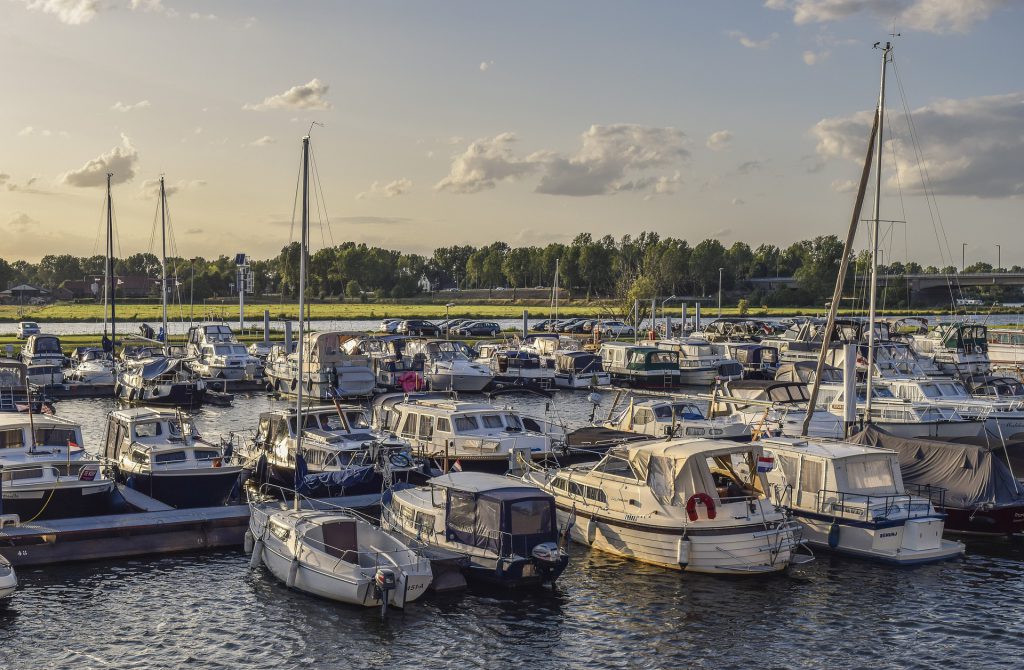Congratulations on the New Boat…Now What?
January 5th, 2021 by team

by B.J. Porter (Contributing Editor)
Buying a boat is fun and exciting. You’ve done your search, you’ve found your true love, made an offer, done a survey, and you’re just about to sign on the dotted line and transfer the payment. In a moment, she’ll be yours.
But are you ready?
There’s a fair amount to do with buying a new boat, everything from finding a berth to getting insurance and safety equipment. Are you ready to hit the water?
Before You Close
While it’s unwise to put nonrefundable deposits down or buy things until you know you have ownership, there’s no reason you can’t make some plans and be ready, so on closing day you just have to make a few phone calls instead of scrambling.
Summer and Winter Berths

Buying a boat in the off season is a good way to save a few bucks, but you’ll need a plan for the spring. If the winter spot isn’t far from where you live, you can just leave the boat until launching, but you may need to bring it closer to home if you have a lot of work and she’s far away.
A temporary spot for a small boat on a trailer is easiest, but if you buy a big boat after hauling season in the fall and you bring the boat to a new yard you’ll be on the outside and first on the list to go in. Some yards may charge you extra to move your boat out of the way if you’re blocking other boats and can’t go in when they want you to.
Buying a boat during the season may leave you short if dockage and moorings are in short supply where you plan to keep your boat. Make phone calls when you sign the contract to look for space. If you find one, you may get the marina to hold it for you with a small deposit, but you don’t want to pre-pay the season until the closing if you can avoid it.
And if you are buying in the off season, make your reservations for your in-season berth NOW. Everyone who had a boat last year has already booked theirs, and there may be nothing available if you wait until it’s time to launch.
Insurance
Insurance is a hot topic with boat owners, and there are several types available. If you have a loan on your boat, you’ll need hull insurance, and most marinas and clubs will require a liability policy at a minimum.
It’s up to you to figure out if you want or need a hull policy or just liability. Older boats will be tough to get hull policies on, and often they’re so expensive it’s not worth the money. But liability protects you from risk. Remember – even if your boat isn’t very expensive, that won’t stop it from dragging the anchor on a million-dollar yacht and putting her on the beach, and that boat’s insurer will come after you for the repairs.
Get your insurance lined up to go into effect the day you close, so there’s no chance you’ll get caught short by an accident before your coverage is in effect.
After Closing
After you write that great big check (or sign that big loan) for the boat, you’re not done spending money just yet.
Transport

How far away is the boat from your intended home port? How easy is the boat to move? Can you need to truck it, or will you sail it on her own bottom? Do you need help? If you’re delivering her from a distance, how much work will she need before she’s safe for the passage?
My first boat was an hour’s drive from where I lived, but I had so much prep work to do before I felt comfortable moving her offshore (and with so little experience) that I ended up trucking her to my marina. My current boat was in Florida when I lived in New England and she’s too big to truck. I had to arrange a delivery trip to bring her home, which took months of planning, remote managing yard work a thousand miles away, and a few trips to Florida to get her ready.
With 20/20 hindsight and experience, I know I could have saved myself a ton of money and trouble getting both boats home. Try to get a handle on the logistical complications and expenses you’ll run into before you buy, so it’s not a surprise. But once she’s yours, you’ll start getting storage bills from where she’s sitting and it may not be the best deal.
Safety Check & Inventory
Your survey should list what’s on board for safety equipment and other gear. After closing is a good time to pull all this stuff out and familiarize yourself with it. Learn how it works, but also pay close attention to what you might be missing. A survey isn’t perfect, and won’t always tell you what isn’t there unless it’s mandated safety equipment.
And even then, the mandated equipment isn’t always what you want to use daily. Bright orange foam PFD’s meet the rules, but they aren’t what you want to wear when you’re sailing on a sunny day in August. Now is the time to look into what extra gear you may need.
You may find a lot of…stuff…on your boat of dubious value and utility. This depends on the size and age of your boat, of course – a new boat won’t have a compartment full of broken pumps and hose pieces under the floorboards like ours did. Try to figure out what it is, and dispose of old, useless or dangerous stuff and store what you can’t figure out right away. You’ll be happier in the long run, starting with a clean boat.
Make a Work List
You already have your first work list. A good surveyor will break out a list of specific recommendations which you can turn into a punch-down list. Prioritize the list into what you need to sail today versus what you need to do soon, and what can wait. And you can add in what you want or feel you need to the list, of course.
- Posted in Blog, Boat Care, Boating Tips, Cruising, Fishing, iNavX, Navigation, Reviews, Sailing, Sailing Tips
- No Comments


Leave a Reply